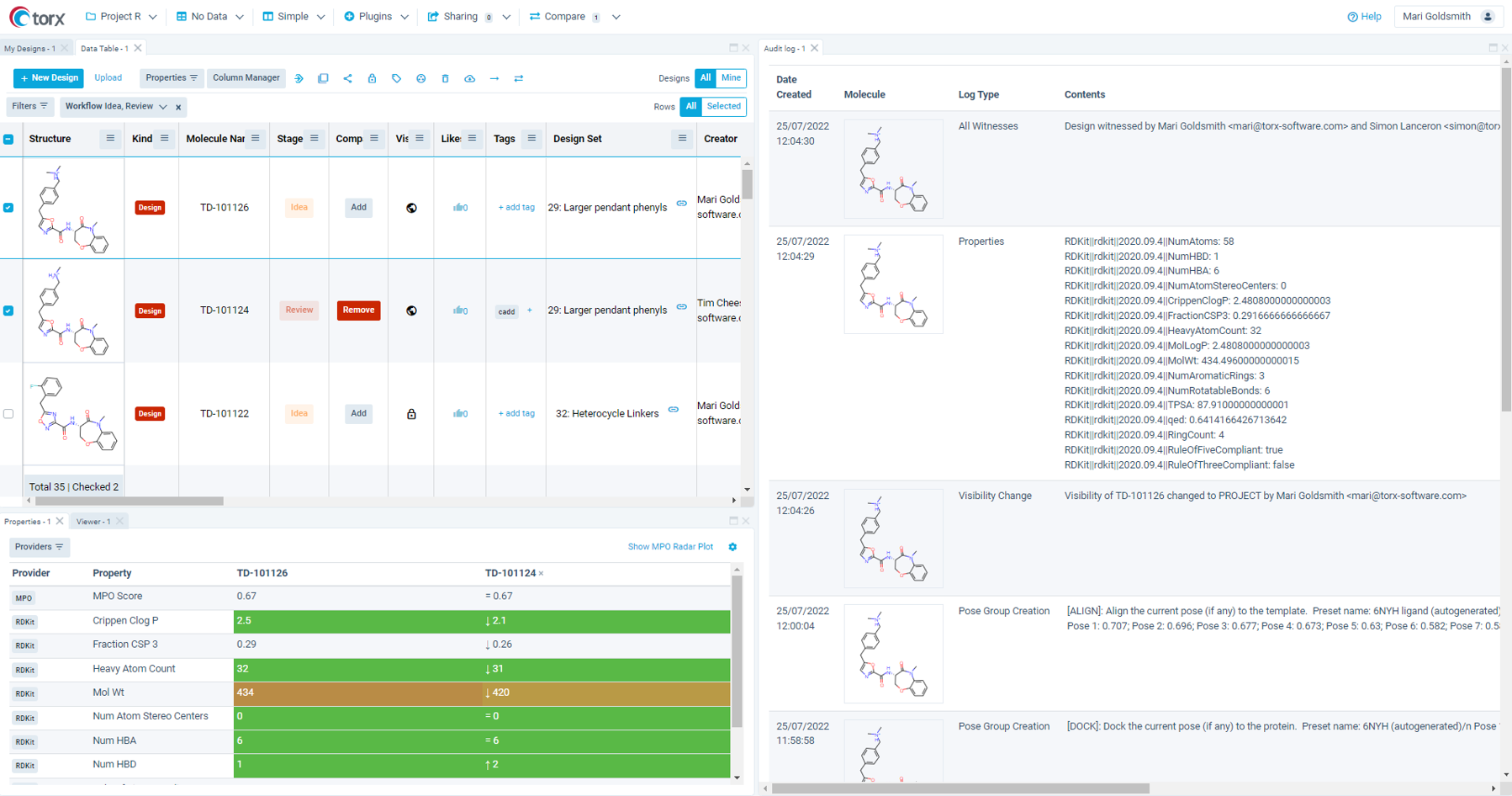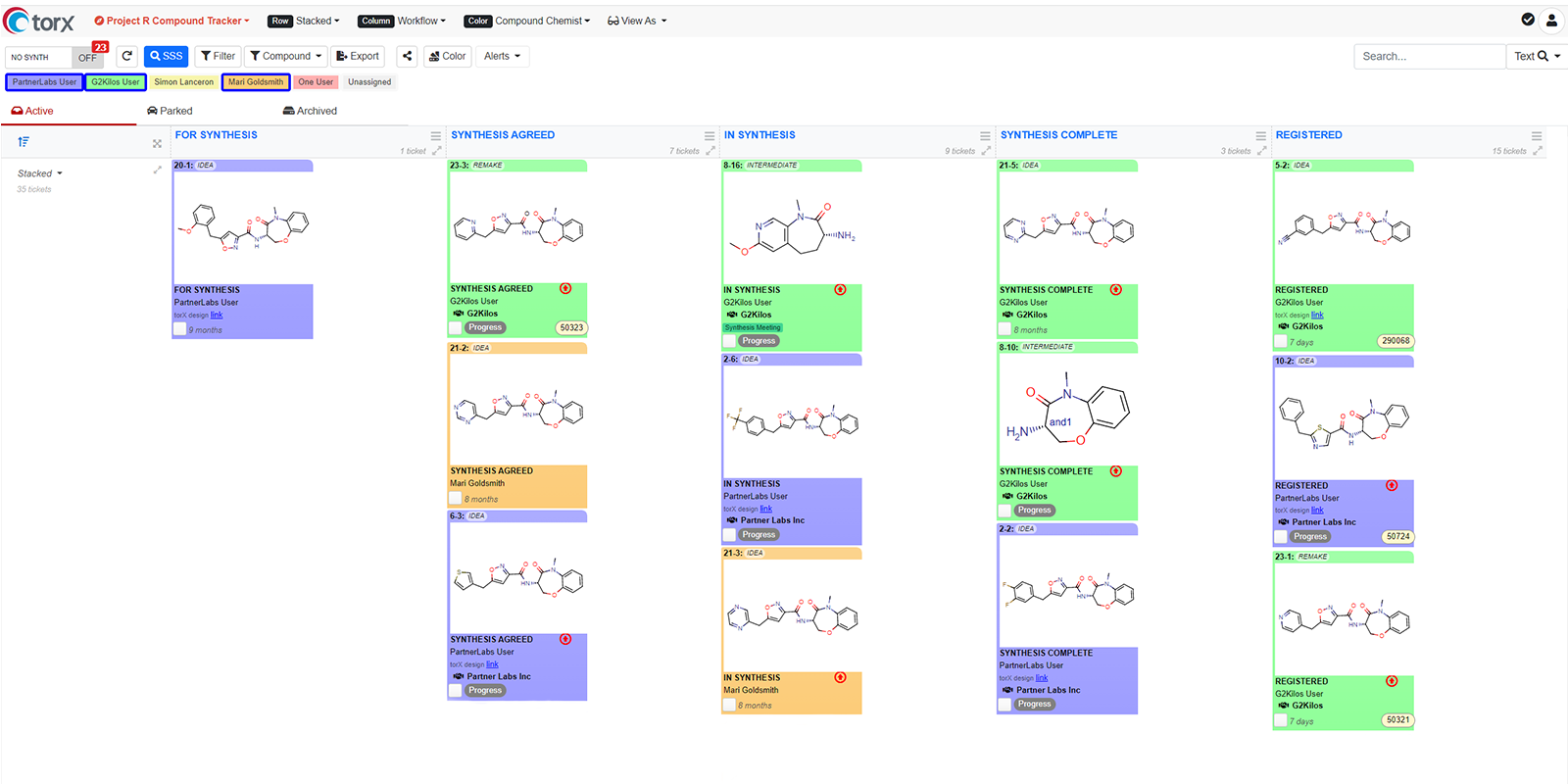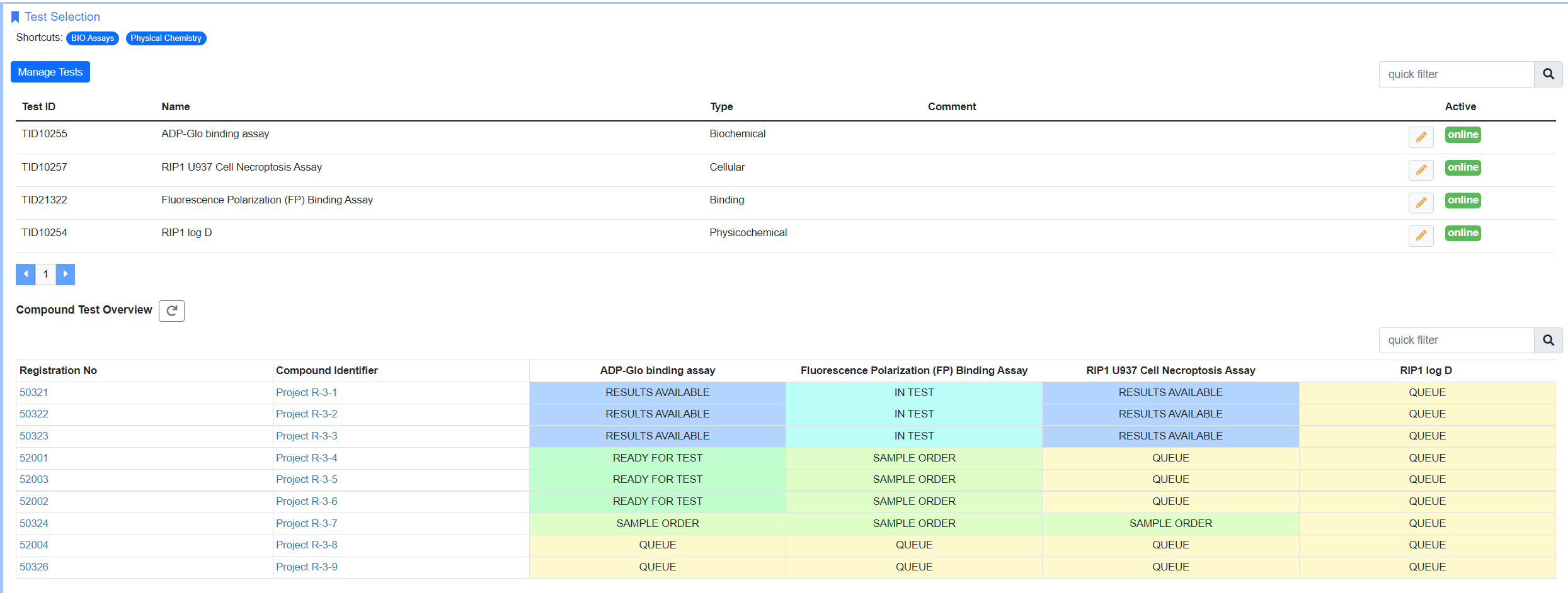A day in the life of a chemist
Working with external collaborators and CROs
Engaging CROs streamlines drug discovery
Chemists often work collaboratively across organizations on discovery projects, with multiple stakeholders working on complex, novel ideas. Partnering with other groups or CROs has enormous benefits, which is why modern discovery projects often involve multiple organizations with individual specialties. This allows rapid access to expert knowledge and streamlined workflows without the initial overhead of building a new, specialized team internally. Ultimately, this increases the cost effectiveness of drug discovery projects, and brings new therapies to market more quickly. However, clear, effective, and secure communication between organizations using traditional channels can be a major bottleneck to productivity. Torx® revolutionizes the way that teams and organizations work together to accelerate the small molecule discovery process, by enabling real-time meaningful dialogue.
The need to communicate chemistry-rich information effectively
The unique nature of small molecule research means that structures, techniques, and results, cannot always be reported in simple text format. As standard tools are not designed to be chemistry-aware, users are unable to capture and search for sophisticated structural information. In addition, multiple organizations are often involved in rapidly evolving projects, where real-time updates following new data must quickly be shared with all stakeholders, to inform operational priorities. So, what then, is the best way to work collaboratively on pharmaceutical projects, where speed, security, and clarity of information transfer, can make-or-break progress? Astonishingly, most chemists still use email to disseminate experimental data and progress information. This can be a hinderance for many reasons, including reduction in speed of project progression. Collaborations often work across continents and between time zones, with very little alignment of working hours, meaning that email response times and therefore slow operational updates can be inhibitive.
Cloud-based software solutions are globally adopted for instant information transfer and collaborative working, although almost none of them are tailored to the chemical sciences. Torx provides a complete suite of tools, specifically created for collaborative discovery chemistry in the modern era. Using Torx, research scientists can now virtually capture unlimited chemical structures and behavioral/performance data in a secure web-based platform, where all stakeholders across the globe, have real-time access. This enhances clarity of information across the entire team, and minimizes effort typically wasted on ‘dead ends’ due to miscommunication. In addition, updates are all recorded in a time-stamped audit log, meaning that historical progression information is always available for presentation and IP purposes.

Figure 1. Users can create their custom environment in Torx Design to show all the relevant structural information and physico-chemical properties of their project compounds. The audit log (right) keeps a comprehensive, time-stamped record of all contributions and modifications.
Centralize information from all partnerships and collaborations
Where multiple CROs are involved in a project, accurate lead times for outsourced work is crucial information to ensure tasks are assigned to teams with appropriate availability. Using Torx Make, chemists can stay up to date with expected lead times from CROs, so that resources are delegated most efficiently. In addition, compound priorities can be tracked and adjusted in real time, meaning that everyone in the project is always working on the most important targets, to maximize scientific impact.

Figure 2. A top-level view of all synthetic progress in Torx Make, highlighting which compounds are assigned to internal scientists and which are assigned to CRO partners. Compounds marked as high priority are instantly visible due to the bold, red arrows.
Transparency is key to operational success in modern drug discovery, though this must be carefully measured against information security, respecting the intellectual property and privacy considerations of all stakeholders. Balancing these imperatives of collaborative work is at the heart of Torx. Torx Make offers complete control over invited users and permissions, meaning that the central discovery team can easily define which aspects of the Torx project are visible to each external stakeholder organization.
Once compounds have been synthesized, they need to be profiled for their potency and safety. Chemists will often engage external teams of assay scientists who specialize in running biological, physico-chemical or ADME tests to accelerate this process. Each different organization will have their own internal procedures, including submission systems. It can be time-consuming for chemists to submit assay requests when they aren’t familiar with specific systems. Torx Test offers a centralized system for submission of operational requests between stakeholder organizations; which minimizes confusion associated with conflicting company-specific workflows, and streamlines productivity.

Figure 3. Torx Test provides a centralized location to submit assay requests to multiple departments and organizations and see real-time status updates.
Streamline communication in your workflow with Torx
Torx maximizes operational productivity, by removing common obstacles when communicating with internal teams and external organizations, to ensure that research chemists are free to focus on the science. The platform assists at each stage of the discovery cycle, from computational molecule design at the very beginning, to tracking compounds in real time through their synthesis and profiling, and analysis of newly registered compounds.
The Design-Make-Test-Analyze steps are the fundamental pillars underpinning drug discovery, and together make up the Torx philosophy of ‘connected chemistry’. Contact us to find out more or try Torx on your project.